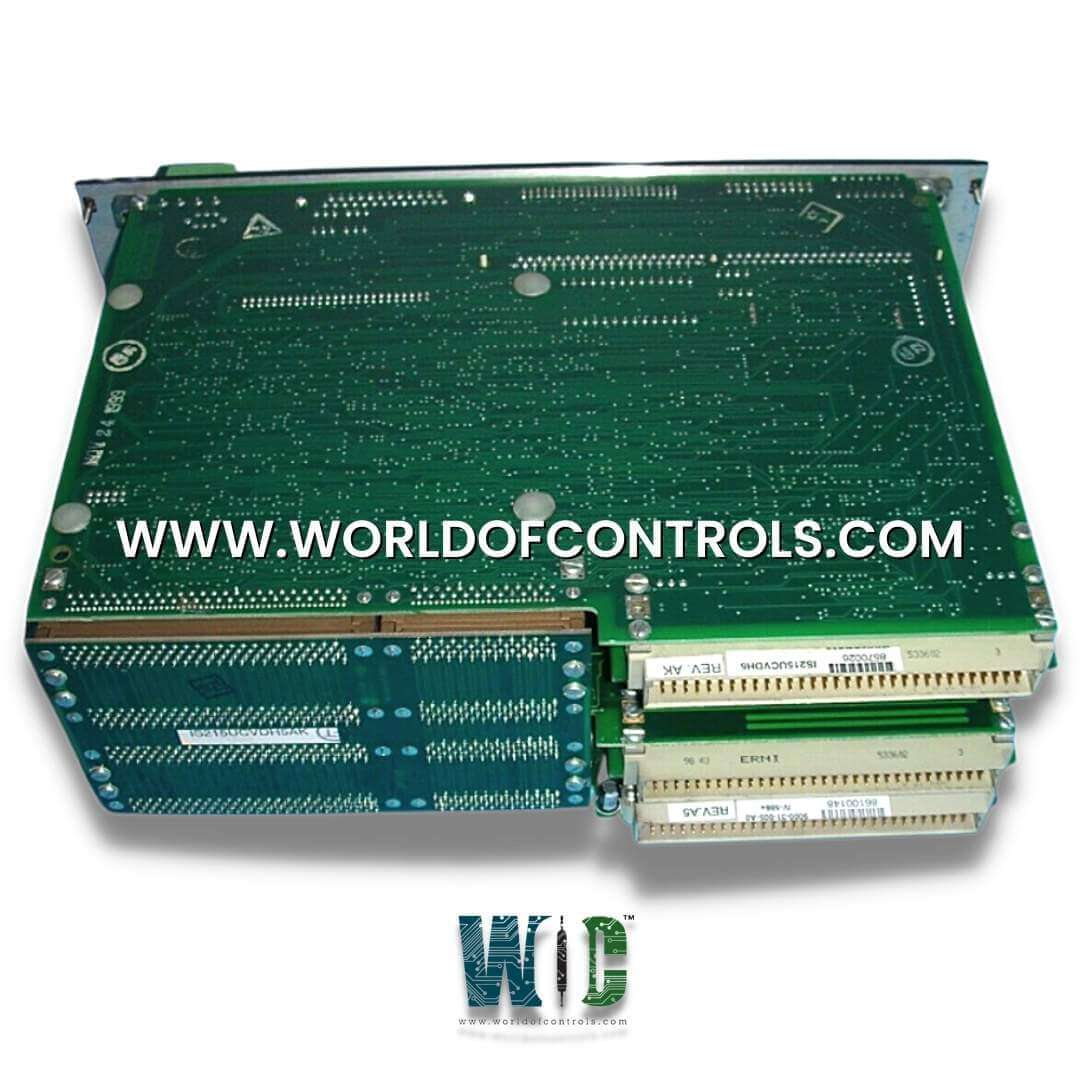
World Of Controls understands the criticality of your requirement and works towards reducing the lead time as much as possible.
IS215UCVDH5AN - Double-Slot Processor Controller Board is available in stock which ships the same day.
IS215UCVDH5AN - Double-Slot Processor Controller Board comes in UNUSED as well as REBUILT condition.
To avail our best deals for IS215UCVDH5AN - Double-Slot Processor Controller Board, contact us and we will get back to you within 24 hours.
SPECIFICATIONS:
Part Number: IS215UCVDH5AN
Manufacturer: General Electric
Series: Mark VI
Product Type: Double-Slot Processor Controller Board
Microprocessor: AMD-K6 300 MHz
Memory: 16 MB DRAM
Operating System: QNX
Programming: Boolean 16-bit signed
Ethernet Interface: Twisted pair 10BaseT, RJ-45
Power Requirements: +5 V DC, 6 A
Dimensions: 16.51 cm High x 17.8 cm
Operating temperature: 30 to 60 °C
No.of Analog Voltage Inputs: 6
Repair: 3-7 days
Availability: In Stock
Country of Origin: United States
Manual: GEH-6721H
FUNCTIONAL DESCRIPTION:
IS215UCVDH5AN is a Double-Slot Processor Controller Board manufactured and designed by General Electric as part of the VI Series used in GE Speedtronic Control Systems. The UCVD is a double-slot processor controller board featuring a 300 MHz AMD K6 processor, designed for efficient and reliable control in industrial systems. It comes equipped with 8 MB of flash memory for firmware storage and 16 MB of DRAM for fast data processing and real-time operations. The board includes a single 10BaseT Ethernet port (RJ-45 connector) that enables seamless communication with the Universal Data Highway (UDH) network, allowing integration with larger control systems and remote monitoring.
For easy status monitoring, the UCVD has two columns of eight LEDs that indicate the controller’s operational condition. When functioning normally, these LEDs light up sequentially in a rotating pattern. In case of errors, the LEDs flash specific error codes to quickly identify and diagnose issues, simplifying troubleshooting and minimizing downtime. This combination of processing power, connectivity, and built-in diagnostics makes the UCVD a key component in complex turbine control and automation systems.
INSTALLATION:
OPERATION:
The UCVD board begins executing its control and communication functions using its 300 MHz AMD K6 processor. It runs the embedded firmware stored in flash memory and uses the DRAM for handling real-time data processing and control logic. The board continuously exchanges information over the 10BaseT Ethernet connection to the Universal Data Highway (UDH) network, enabling seamless integration with other control system components.
The onboard status LEDs provide real-time feedback on the board’s condition. During normal operation, the LEDs cycle through a rotating sequence to indicate the processor is active and functioning correctly. If a fault or error is detected, the LEDs display a specific flashing error code to alert operators. These codes facilitate quick diagnosis and troubleshooting without the need for additional diagnostic tools.
COMPATIBILITY:
The UCVD double-slot processor controller board is designed to be fully compatible with the GE Mark VI Speedtronic control system architecture. It interfaces seamlessly with the Universal Data Highway (UDH) network, enabling integration with other Mark VI components such as the UDC (Universal Digital Controller) and associated I/O modules. The board supports communication protocols and firmware standards typical to Mark VI systems, ensuring reliable interoperability within turbine control and industrial automation setups.
Additionally, the UCVD’s hardware and software are optimized for use in gas turbine control applications, but its design also allows adaptability to other industrial environments requiring robust processing, network connectivity, and built-in diagnostics. Compatibility with standard 10BaseT Ethernet networks ensures it can connect to common industrial Ethernet infrastructures for flexible deployment.
WOC has the largest stock of OEM Replacement Parts for GE Speedtronic Control Systems. We can also repair your faulty boards and supply unused and rebuilt boards backed up with a warranty. Our team of experts is available around the clock to support your OEM needs. Our team of experts at WOC is happy to assist you with any of your automation requirements. For pricing and availability on parts and repairs, kindly contact our team by phone or email.
What processor architecture does the UCVD board utilize?
The UCVD board is built around a 300 MHz AMD K6 microprocessor, which is based on the x86 architecture. This processor was chosen for its balance of computational power and efficiency, suitable for real-time industrial control tasks. The K6 provides the processing capabilities needed to execute complex turbine control algorithms, manage data flow, and maintain communication with other system components with minimal latency, ensuring stable and responsive control system performance.
What memory types and capacities are present on the UCVD board?
The board contains two primary memory types: 8 megabytes of flash memory and 16 megabytes of dynamic RAM (DRAM). The flash memory is non-volatile, meaning it retains firmware and critical software even when power is lost, allowing quick startup and reliable operation.
Which communication protocols are supported via the Ethernet port?
The UCVD board supports a standard 10BaseT Ethernet connection using the RJ-45 interface. Communication over this port utilizes TCP/IP protocols to interface with the Universal Data Highway (UDH) network, which is the backbone communication network within the GE Mark VI control system.